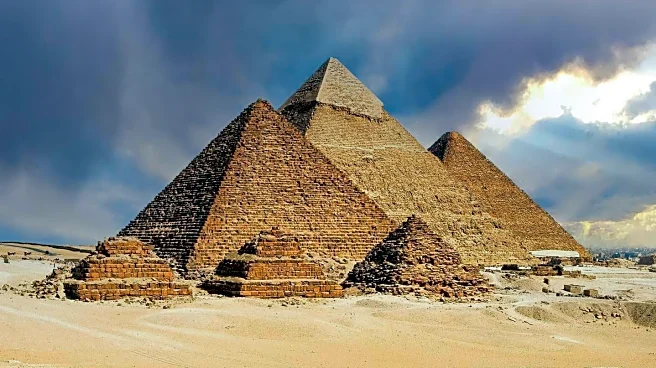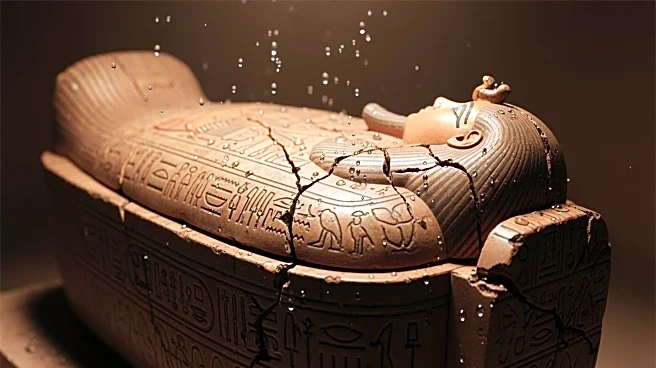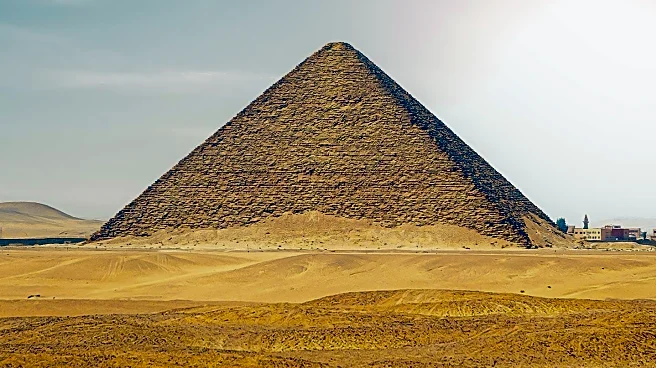What's Happening?
The tomb of Egyptian pharaoh Tutankhamun is facing significant structural threats, according to a study by Sayed Hemeda from Cairo University. The research highlights visible cracks in the ceiling and
fungal outbreaks on mural walls, attributing these issues to flash floods and rising humidity linked to climate change. The tomb, located in the Valley of the Kings, is considered poorly preserved, with the surrounding porous limestone and Esna shale contributing to its instability. The study calls for immediate reinforcement and moisture control to prevent further damage and potential collapse.
Why It's Important?
The deterioration of King Tutankhamun's tomb poses a threat to one of the world's most famous archaeological sites, which has been a source of historical and cultural fascination since its discovery in 1922. The potential collapse could result in the loss of invaluable historical artifacts and mural paintings, impacting tourism and Egypt's cultural heritage. The situation underscores the broader implications of climate change on historical sites, highlighting the need for proactive preservation measures to protect such treasures from environmental threats.
What's Next?
Experts, including Mohamed Atia Hawash from Cairo University, emphasize the urgency of implementing preservation strategies, such as reducing the load on the mountain above the tomb. The study suggests a focused strengthening and retrofitting program to mitigate moisture fluctuations and structural stress. The absence of a culture of prevention in preservation efforts is noted, indicating a need for scientific monitoring and proactive measures to prevent disaster.
Beyond the Headlines
The risk to King Tutankhamun's tomb highlights the ethical responsibility of preserving historical sites amidst climate change. It raises questions about the balance between tourism and conservation, and the role of international cooperation in safeguarding global heritage. The situation may prompt discussions on sustainable tourism practices and the integration of climate resilience in cultural preservation strategies.












